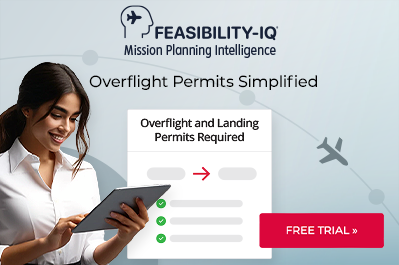Business Aircraft Ops to India: Airport Operations

This business aviation blog post is part of a series on operating in India and continues from our last article: “Business Aircraft Ops to India: Airport Options.”
Airport traffic in India is on the upswing, as a result of significant growth in scheduled commercial and low-cost carrier operations. General Aviation (GA) operators need to be mindful of peak commercial traffic periods along with potential parking challenges.
The following is an overview of what you need to know:
1. Parking considerations
The most challenging airport in India for GA parking is Mumbai (VABB). This location has a 72-hour GA parking limitation with longer-term parking generally not available. If you want to stay at VABB more than three days, you’ll need to reposition your aircraft. Chandigarh (VICG) is another airport with parking limitations, and Goa (VOGO) can be challenging due to the lack of GA parking spots. Be mindful that many Indian airports implement temporary parking restrictions from time to time. It’s always recommended to confirm all parking arrangements well in advance.
2. Airport slots and PPRs
When you operate to larger Airports of Entry (AOEs), airport slots may be required. Slots are requested via e-mail from the airport slot coordinator. Currently, the toughest airport in India to secure preferred slot times is VABB. Be mindful that slot deviation depends on the particular airport. Prior Permissions Required (PPRs) are always needed for operation to military airports, including VIAG and VOGO. Note that PPRs are generally good for +/- one hour.
3. Parking options
Where GA aircraft are parked depends on the airport and size/weight of the aircraft. At VIDP and VABB, separate ramp areas are reserved for GA. Wide-body and larger aircraft may, however, be assigned either GA or commercial parking areas depending on availability. At smaller airfields there’s usually just one parking area for both commercial and GA operations. Hangar space for transient GA operations is difficult to secure in India. VABB and VIDP have hangars that are privately owned and may be secured for GA operators on a case-by-case basis, which is subject to availability. Guwahati (VEGT) – in the northeast part of the country close to Nepal – is an exception in this regard. A new hangar is under construction at VEGT, and this will be available to GA. While not currently a 24-hour AOE, VEGT is being used more frequently by GA, and both airport and Customs, Immigration, and Quarantine overtime options are available.
4. Towing requirements
While some power in/power out parking spots are available – particularly at smaller airports in India – the standard operating procedure at larger AOEs is often a tow or push to the taxiway. Once moved to the taxiway, and ground clearance has been received, the aircraft will be permitted to move on its own power.
5. Scheduled commercial operations take priority
While the Directorate General of Civil Aviation in India does appreciate the importance of GA and its economic contribution to the nation, scheduled commercial operations always take priority. We recommend that operators familiarize themselves with peak hours of commercial activity, at all of their destination airports. Commercial airline activity generally peaks 0700-1200 and 2200-0300 local.
6. Holiday periods
Be aware that October to March is the traditional peak period for tourism in India. During this time aircraft parking availability, as well as hotel options, may be limited at such locations as VOGO, Jaipur (VIJP), and Jodhpur (VIJO). Be mindful that January 26 is India’s Republic Day, and August 15 is Independence Day, which may lead to hotel and aircraft parking availability issues. Additional airport restrictions are occasionally put in place during busy periods, as published by notice to airmen.
7. Day of departure
On day of departure, your ground handler will notify air traffic control; ensure your flight plan is filed; and also notify airport immigration, customs and security agencies. Your handler will ensure all airport fees are paid and invoice the operator at a later date. One item that is an exception for India is the flight plan process for VABB. VABB is the only airport in India where the airport authority requires the pilot in command to go to the tower to sign the flight plan.
8. Additional reading: Business Aircraft Ops to India – Series Index
Note: Links will be updated as articles are published.
- Part 1 – Airport options
- Part 2 – Airport operations
- Part 3 – Ground handling
- Part 4 – Additional services and operating costs
- Part 5 – Fuel and security
- Part 6 – CIQ
- Part 7 – Permit considerations
- Part 8 – Slots and military operations
- Part 9 – Flight planning
- Part 10 – Weather and additional flight planning information
- Part 11 – Hotel and local area
Conclusion
Operating procedures at airports in India vary and may be unique. Depending on your destination, you may require airport slots or PPRs. It’s recommended that these are always obtained in advance to avoid any issues upon arrival. Also, note that there are parking restrictions for some airports that may be due to congestion, due to an event taking place in the city or due to high-season traffic.
Later, we’ll discuss ground handling for India and its impact on your trip.
Questions?
If you have any questions about this article or would like assistance planning your next trip to India, contact Christine Vamvakas at christinevamvakas@univ-wea.com.




